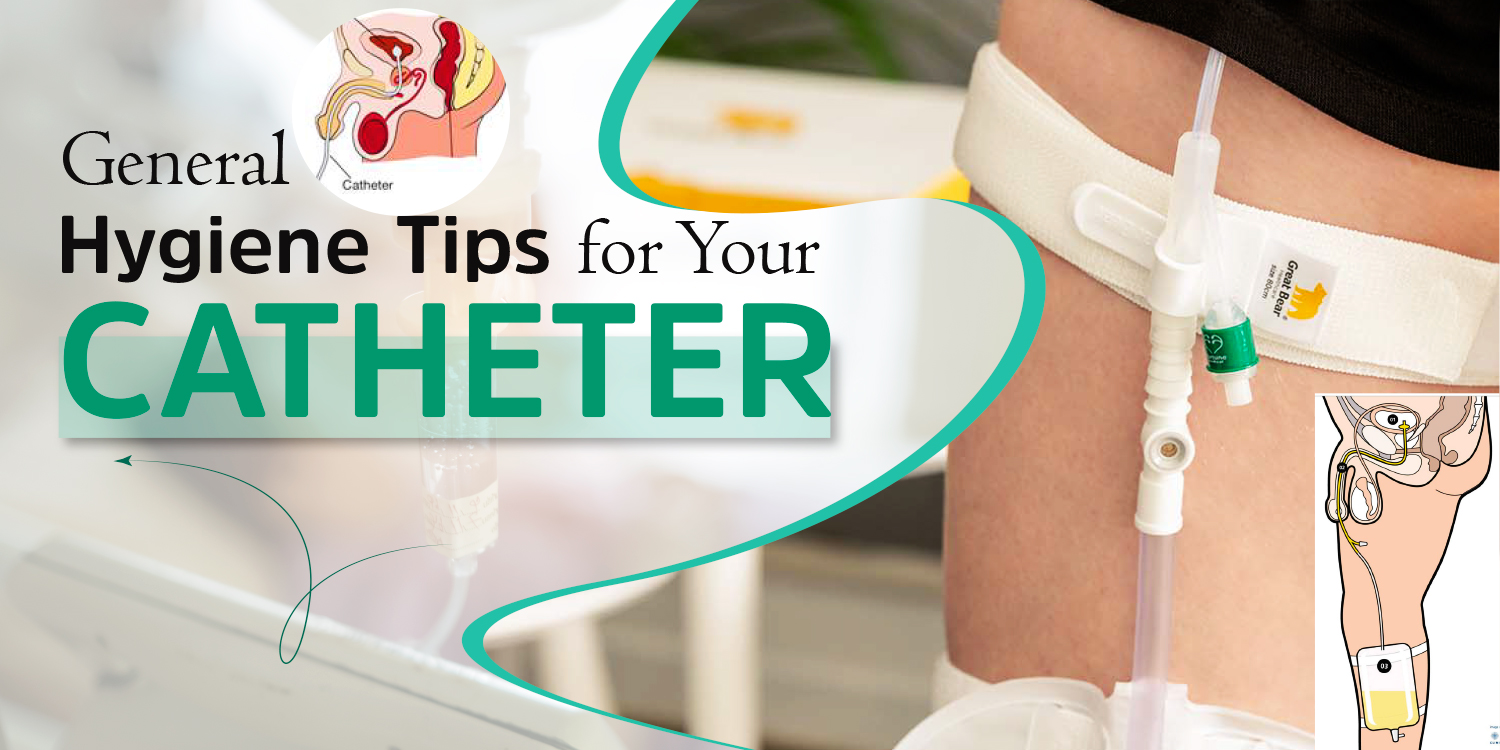General Hygiene Tips for Your Urinary Catheter
Despite what you might believe, the “common knowledge” that you can’t wear your catheter without it being obvious to others doesn’t necessarily follow. With that in mind, it’s crucial that you maintain decent hygiene standards for your catheter to work superbly every time.
It’s all about reducing infection risk since you’re at a sensitive position with a catheter inserted unto your person. A measure of self-awareness (not necessarily self-consciousness) should be applied for catheter maintenance.
Wash Your Hands and Your Catheter
To keep your catheter working properly and not compromise your health, you should always wash your hands before handling it. That’s a must do. To be more specific, the catheter’s visible part and the area where it enters your body should be regularly washed as well along with your hands.
Use warm soapy water for the job once every day during showers. For men, around the catheter where it enters your penis, you should see a discharge. Gently clean this off when washing the catheter. No worries; it is normal bodily discharge from your urethra.
Dos and Don’ts for Catheter Cleaning for Women and Men
Don’t use creams, lotions, bath salts, bubble bath, antiperspirants, talcum powder, perfume, or scented soap when washing the catheter, especially the part that enters inside you.
When it Comes to Women:
- They should wash from the front to the back. This wiping motion must especially be done after a bowel movement has occurred.
- It’s better to take a shower than prepare a bath. Leave your valve or bag attached to the catheter as you shower.
- If it’s a leg bag you’re dealing with, it should be kept below your bladder level always.
- Sometimes, the urethra might end up with urine leaking out. Don’t worry. This is normal. However, contact your healthcare provider for further advice regardless.
When it Comes to Men:
- Make sure to wash under the catheter-attached penis foreskin.
- For those uncircumcised, pull back the foreskin in order to clean the underneath area.
- The idea here is to clean it out to keep a smegma ring from forming, leading to soreness and irritation.
- Place the foreskin to its original position after pulling it back and cleaning it out. This can also develop into painful swelling known as paraphimosis.
- If you get paraphimosis, consult your doctor ASAP.
- If your foreskin is too tight then it has phimosis and you shouldn’t try. You could injure yourself by forcing the issue.
- Ask your nurse for help. They will tell you how to clean the foreskin from underneath using a syringe filled with cool tap water.
Should You Reuse Your Catheters or Should You Not?
Catheter manufacturers put in restrictions on how often the catheter could be used and reused. Read the documentation or the package whether the catheter attached to you is a single-use one or a reusable one.
Some catheters are multi-use and others are single-use. Don’t reuse single-use catheters as per the recommendations of the Department of Health. The doctors who attached the catheter to you might know what type it is. Consult them for more details, as usual.
Cleaning Regime for Your Reusable Catheter
After using the catheter, immediately rinse under running water before reusing. If you can’t do that right now, go take it home for cleaning.
- It should specifically be cleaned with mild liquid soap mixed with boiled water that’s been cooled down.
- Rinse the soap suds off with the cooled, boiled water. Every trace of the soap should be washed away.
- The catheter should be “flicked” dry, but at the same time don’t touch the end that goes into your urethra.
- If you’re reusing more than one catheter, rotate their usage and pay attention how many times they’ve been used as per manufacturer recommendations.
- Follow the guidelines for reuse as well, particularly when to replace them. Most reusable catheters require replacement every 3 months or less. The more you use them the more often they’ll require replacement.
- Once the surface of the catheter becomes sticky or rough, it should be discarded ASAP.
- Always wash your hands when handling your catheter to avoid infection.
Don’t Forget to Keep This in Mind
Take care of your external catheter to keep the flow of the waste products and whatnot unimpeded. You might feel self-conscious about your catheter or pouch. However, there’s no need to fret.
Furthermore, many people with catheters or ostomies can live normal or even physically active lives. Some of the even participate with all sorts of sports, such as the San Diego Chargers’ placekicker Rolf Bernischke, who lives with an ostomy.
